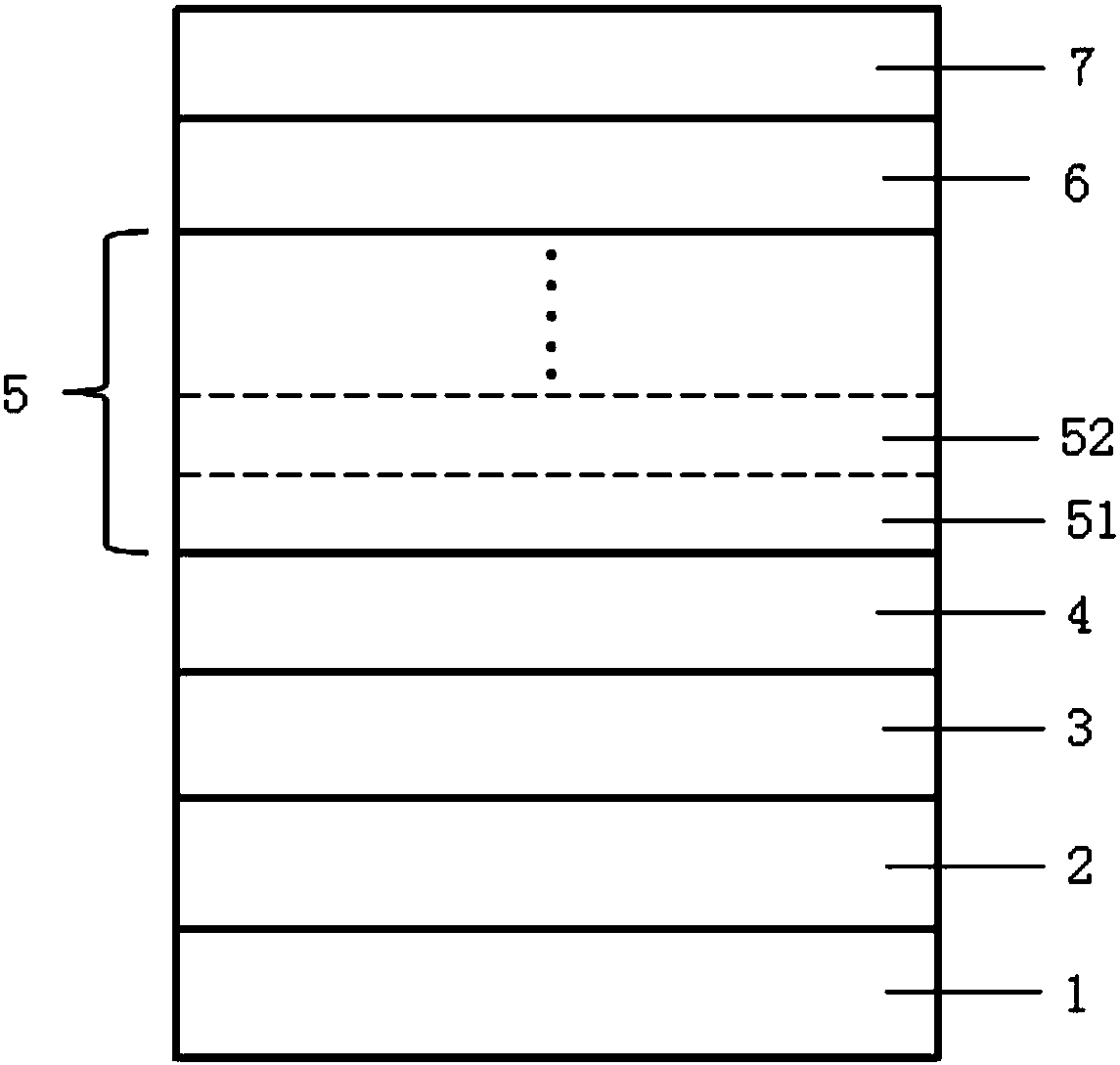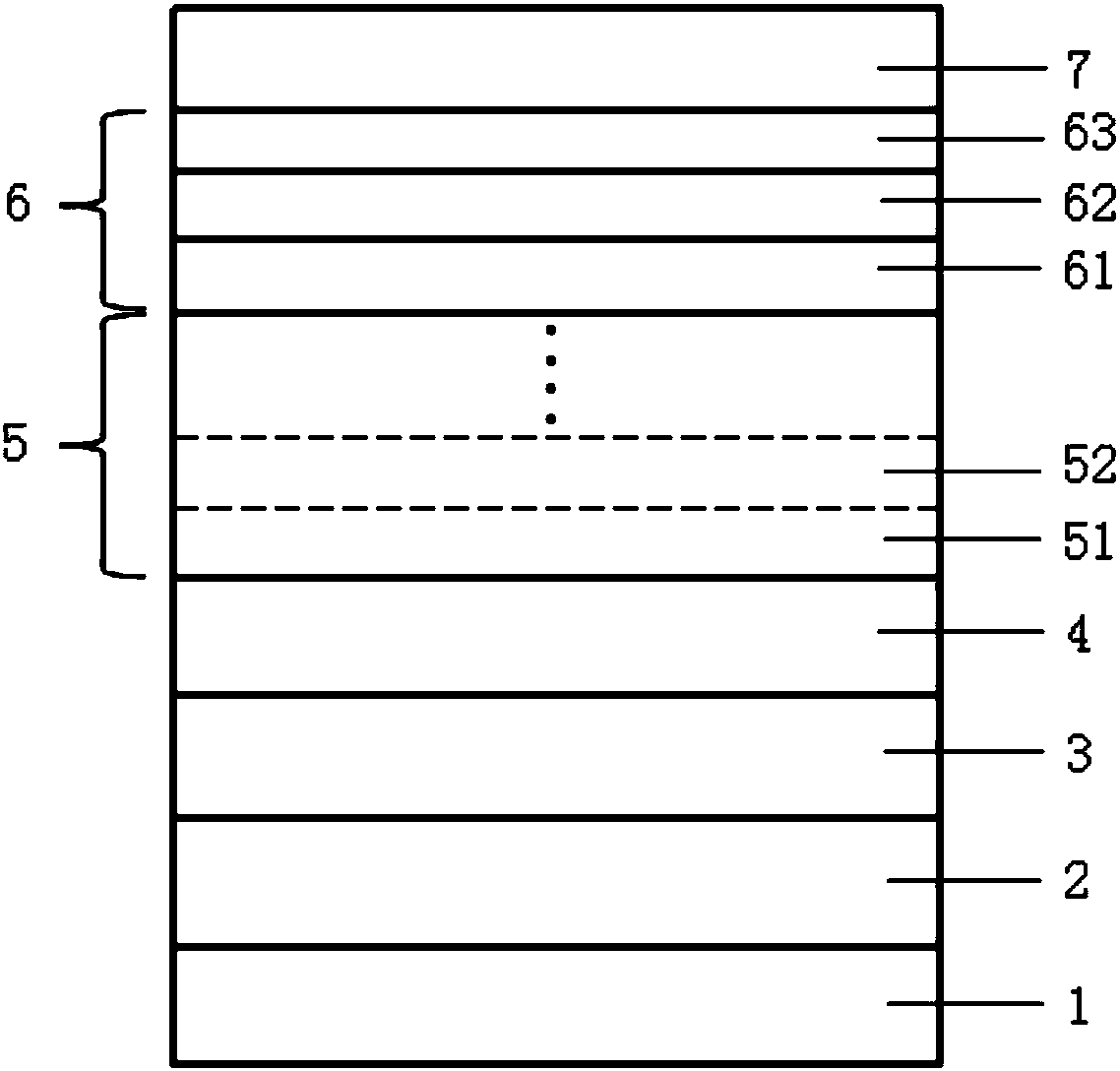LED epitaxial growth method for improving light-emitting efficiency
A technology of epitaxial growth and luminous efficiency, applied in electrical components, circuits, semiconductor devices, etc., can solve problems such as affecting the energy saving effect of LEDs and low luminous efficiency of LEDs, so as to improve the internal quantum efficiency of LEDs, improve recombination efficiency, and improve overlap. The effect of points
- Summary
- Abstract
- Description
- Claims
- Application Information
AI Technical Summary
Problems solved by technology
Method used
Image
Examples
Embodiment 2
[0052] The LED epitaxial growth method for improving luminous efficiency provided in this embodiment uses MOCVD to grow high-brightness GaN-based LED epitaxial wafers, and uses high-purity H 2 or high purity N 2 or high purity H 2 and high purity N 2 The mixed gas as the carrier gas, high-purity NH 3 As the N source, the metal-organic source trimethylgallium (TMGa) is used as the gallium source, trimethylindium (TMIn) is used as the indium source, and the N-type dopant is silane (SiH 4 ), trimethylaluminum (TMAl) as the aluminum source, and the P-type dopant as magnesium dicene (CP 2 Mg), the reaction pressure is between 70mbar and 900mbar. The specific growth method is as follows (for the epitaxial structure, please refer to figure 2 ):
[0053] A LED epitaxial growth method for improving luminous efficiency, comprising: processing a substrate, growing a low-temperature buffer layer GaN, growing an undoped GaN layer, growing an N-type GaN layer doped with Si, and alter...
PUM
 Login to View More
Login to View More Abstract
Description
Claims
Application Information
 Login to View More
Login to View More - R&D
- Intellectual Property
- Life Sciences
- Materials
- Tech Scout
- Unparalleled Data Quality
- Higher Quality Content
- 60% Fewer Hallucinations
Browse by: Latest US Patents, China's latest patents, Technical Efficacy Thesaurus, Application Domain, Technology Topic, Popular Technical Reports.
© 2025 PatSnap. All rights reserved.Legal|Privacy policy|Modern Slavery Act Transparency Statement|Sitemap|About US| Contact US: help@patsnap.com



